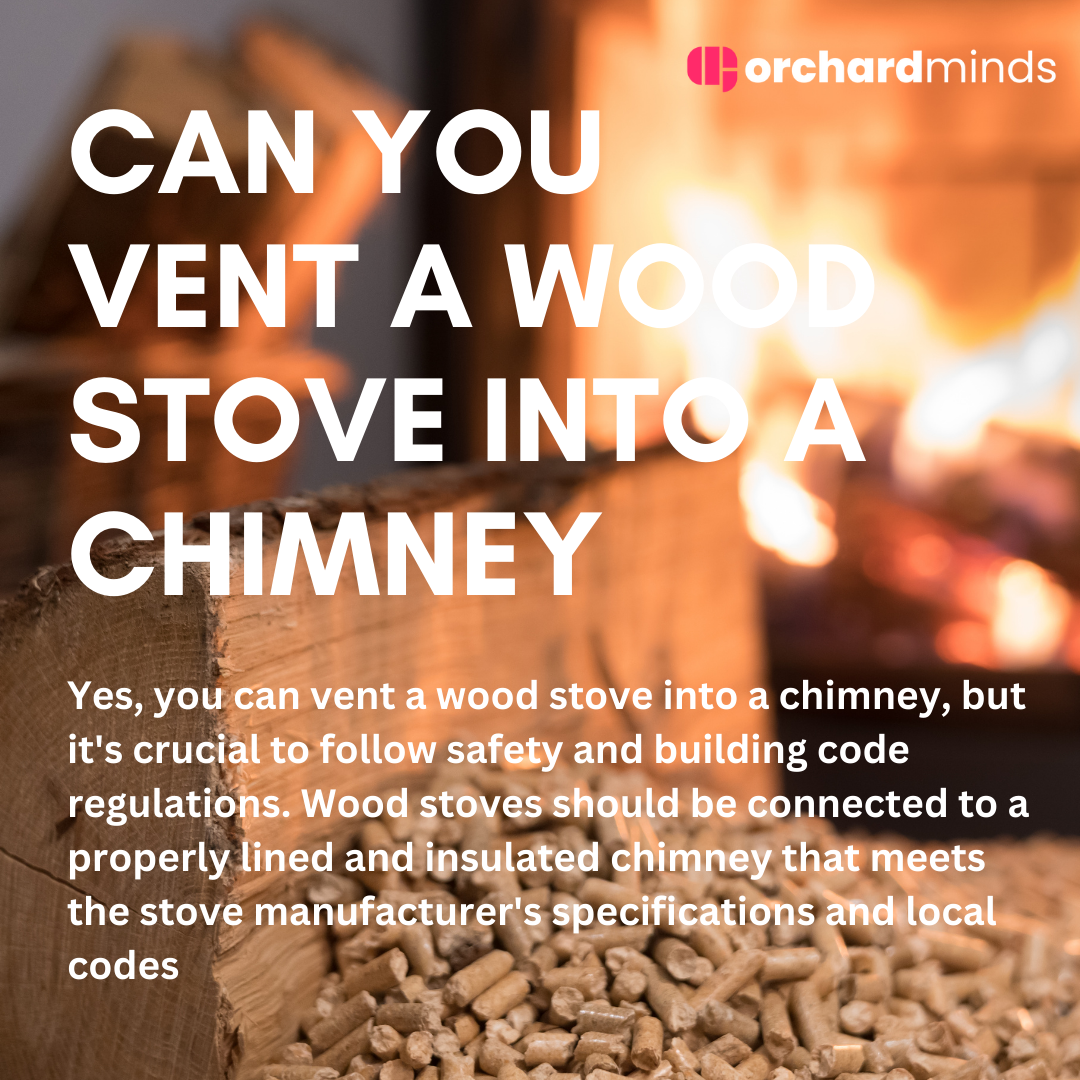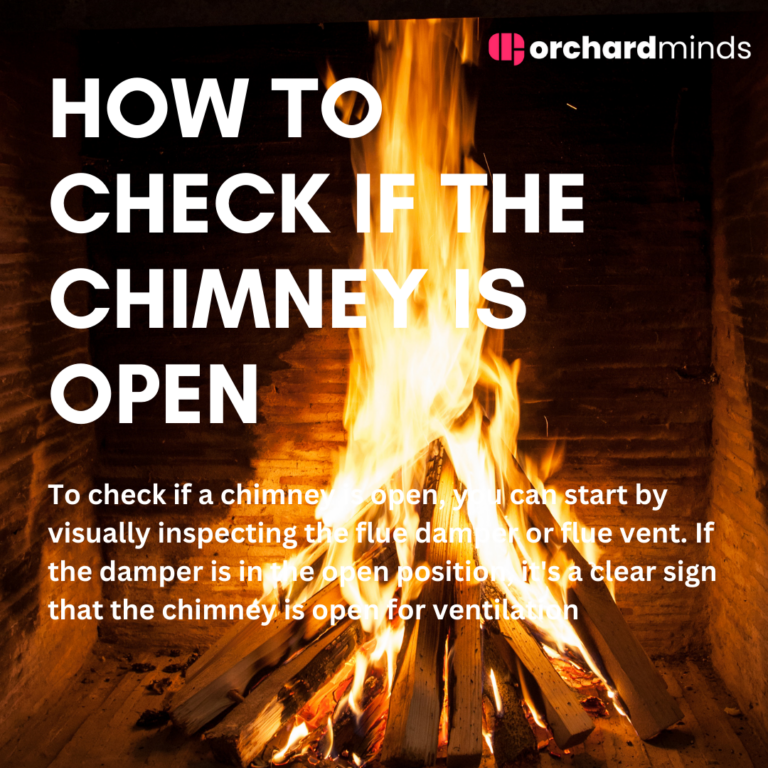Can you vent a wood stove into a chimney? Yes, you can vent a wood stove into a chimney, but it’s crucial to follow safety and building code regulations. Wood stoves should be connected to a properly lined and insulated chimney that meets the stove manufacturer’s specifications and local codes. This ensures efficient venting of smoke and gases while minimizing the risk of chimney fires or structural damage. A correctly installed wood stove can provide an efficient and safe heating solution for your home. Consult with a professional chimney or wood stove installer to ensure compliance with local regulations and safety standards.
What to Know Before Installing a Wood-Burning Stove in an Existing Fireplace
Installing a wood-burning stove in an existing fireplace can be an excellent way to enhance both heating efficiency and the ambiance of your home. However, there are several important considerations to keep in mind before embarking on this project.
- Safety Regulations: Ensure that you comply with local building codes and regulations for wood-burning stoves. Regulations vary by location and can cover issues such as clearances from combustibles, chimney height, and required hearth materials. Check with your local authorities or a professional installer to understand the specific requirements for your area.
- Chimney Inspection: Have your chimney inspected to ensure it’s in good condition and suitable for a wood stove. If your existing chimney is damaged or not designed for a stove, modifications or a new chimney may be necessary.
- Stove Selection: Choose a wood stove that is appropriately sized for the space you intend to heat. A stove that’s too large can lead to overheating, while one that’s too small may not provide sufficient heat.
- Chimney Liner: If your chimney is unlined or has a damaged liner, it’s usually advisable to install a stainless steel chimney liner. This improves safety draft efficiency and reduces the risk of chimney fires.
- Clearances: Maintain adequate clearances from combustible materials. This includes the stove itself, walls, floors, and any nearby furniture or decorations. Follow the manufacturer’s guidelines for clearances to prevent fire hazards.
- Hearth Protection: Install a non-combustible hearth or floor protector under the stove. The type and size of the hearth can be specified by local regulations or the stove manufacturer’s guidelines.
- Proper Installation: Professional installation is highly recommended. Certified installers are familiar with safety standards, local regulations, and proper venting techniques. They can ensure that the stove is installed correctly, providing efficient heating and minimizing risks.
- Venting: Decide whether you want to vent through the existing chimney or create a new venting system. Both options can be viable, but using the existing chimney may require alterations to ensure proper draft and safety. A professional can help you make this choice.
- Insurance and Permits: Check with your insurance provider to see if the installation affects your policy. Additionally, you may need permits for the installation, so consult with your local building department.
- Maintenance: Regular maintenance is essential for safe and efficient operation. This includes cleaning the chimney, inspecting and cleaning the stovepipe, and replacing gaskets and other parts as needed.
Chimney and Flue Size
The size and capacity of your chimney and flue must be compatible with your wood stove’s requirements. An appropriately sized flue ensures efficient venting and prevents issues like draft problems and smoke backup. Consult the stove manufacturer’s guidelines or a professional installer to determine the correct sizing for your specific stove model.
Distance to Combustibles
Maintaining proper clearances from combustible materials is essential for safety. The minimum distance to walls, floors, furniture, and other flammable items should follow local building codes and the stove manufacturer’s recommendations. These clearances help prevent fires and ensure safe stove operation.
Stove Heat Output
Select a wood stove with an appropriate heat output for the space you intend to heat. Stoves come in various sizes and heat capacities, so choosing the right one is crucial. An undersized stove won’t adequately heat your space, while an oversized stove may lead to overheating and safety concerns.
Ventilation
Adequate ventilation is essential to ensure proper combustion and prevent the buildup of dangerous gases like carbon monoxide. Ensure that your home has sufficient fresh air intake and that the stove is installed with proper ventilation systems, which can include venting directly outside or through the chimney.
Stove Hearth and Surround
The stove must be placed on a non-combustible surface, typically referred to as a hearth or floor protector. This surface protects against accidental sparks or embers that could ignite the floor beneath the stove. It should meet local regulations and the stove manufacturer’s specifications. Additionally, the stove’s surrounding area should also be non-combustible, including any walls, mantels, or decorations near the stove to prevent fire hazards.
Can You Open Up an Old Fireplace For a Wood Burner?
Yes, you can open up an old fireplace for a wood burner, and it’s a popular choice for homeowners looking to enhance both the aesthetics and heating efficiency of their homes. However, there are several important steps to consider when converting an existing fireplace to a wood burner.
- Chimney Inspection: Before proceeding, it’s essential to have the chimney thoroughly inspected by a professional. They will assess its condition, cleanliness, and suitability for venting a wood-burning stove. Suppose the chimney has an existing liner or is in poor shape. In that case, it may require modifications or a new liner for safe and efficient operation.
- Clearances: Ensure that the fireplace and its surrounding area have proper clearances for safe installation. Local building codes and the stove manufacturer’s guidelines will specify the required distances from combustible materials like walls, floors, and mantels. Often, non-combustible hearths and protective wall materials are necessary.
- Stove Selection: Choose a wood-burning stove that suits the size of your fireplace and heating needs. The stove should fit comfortably within the fireplace opening and be appropriately sized for the space you intend to heat. Overly large or small stoves can lead to inefficiencies or overheating.
- Chimney Adaptation: Depending on the type of wood burner and the existing chimney, you may need to modify the chimney system to accommodate the stove’s venting requirements. This could involve altering the chimney liner, adding a stainless steel liner, or making other adjustments to ensure proper draft and safety.
- Hearth Installation: A non-combustible hearth or floor protector should be installed beneath the stove to protect the floor and meet safety requirements. The type, size, and specifications of the hearth can be determined by local codes and the stove manufacturer’s recommendations.
- Professional Installation: The installation of the wood burner should be performed by a professional with experience in stove installation and familiarity with local regulations. They will ensure that the stove is correctly positioned, vented, and meets all safety standards.
- Inspection and Approval: After installation, it’s advisable to have the installation inspected to ensure it complies with local codes and safety standards. You may need to obtain permits and approvals from your local building department.
Converting an old fireplace for a wood burner can be an excellent way to enjoy the warmth and ambiance of a wood stove. However, the process involves numerous safety considerations, and professional guidance is strongly recommended. By addressing these steps correctly, you can safely and effectively open up an old fireplace for a wood burner, enhancing the comfort and appeal of your home.



Leave a Comment